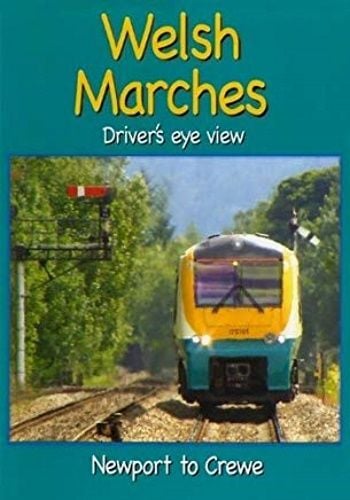
Welsh Marches: Newport to Crewe Drivers Eye View

BUY Welsh Marches Drivers Eye View
Click one of the Ebay or Amazon buttons below to check the latest prices and purchase this drivers eye view video.
This DVD takes viewers along the Welsh Marches, the border region between Wales and England, on board a three-car Class 175 Coradia DMU. The journey begins as the train joins the route from Milford Haven to Manchester Piccadilly, approaching Newport and the recently re-signalled section controlled by the South Wales Control Centre. From there, signalling transitions to a 1960s panel box at Little Mill and then to traditional mechanical signalling at Abergavenny, with cameras inside all three signal boxes highlighting this fascinating technological progression.
The line follows the border through Abergavenny, Hereford, Shrewsbury, and Nantwich, offering a blend of operational interest and spectacular scenery. Dozens of former and existing junctions, along with rolling countryside views, provide a visually engaging journey, filmed in bright mid-summer sunshine.
Mechanical signal boxes play a key role throughout the route, including Europe’s largest at Shrewsbury, demonstrating the unique combination of historic and modern railway operations. This mix of old and new is complemented by vivid cab footage, giving viewers an authentic front-line perspective of the service.
Narration provides both historical context and insights into current-day operations on this Arriva Trains Wales service. Combining engineering detail, scenic landscapes, and operational expertise, this Driver’s Eye View DVD offers a compelling and immersive experience along one of the UK’s most intriguing border lines.
Related Searches
Welsh Marches Drivers Eye View can be purchased on DVD by clicking the links provided further up this page....
Welsh Marches Drivers Eye View can be purchased on Blu Ray by clicking the links provided further up this....
The original publisher of this drivers eye view may offer a download version. Search now to find out....
Welsh Marches Drivers Eye View can be purchased by clicking the links provided further up this page....





